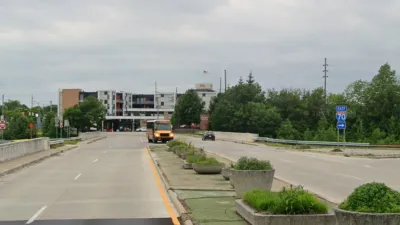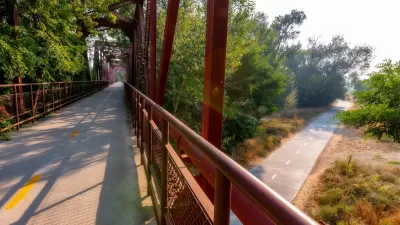If you've always thought that the primary way to encourage more bicycling in your city was simply to build more bike lanes and bike paths, you'll be happy to read about a new study that finally proves your point.
Brad Plumer reports on the simple math reported in a new study [PDF] published in the journal Transport Policy, that proves the single most important factor in encouraging cyclists is the creation of bike lanes and bike paths. Ralph Buehler and John Pucher, authors of the study, "found that the presence of off-road bike paths and on-street bike lanes were, by far, the biggest determinant of cycling rates in cities. And that's true even after you control for a variety of other factors like how hot or cold a city is, how much rain falls, how dense the city is, how high gas prices are, the type of people that live there, or how safe it is to cycle," reports Plumer.
By the way, you're not the only one who thought this equation seemed pretty obvious. However, as Plumer writes, "the authors do note that previous research was somewhat scattered on this question. A few studies had found that more bike lanes in a city were associated with more cycling, though it was unclear which was causing which. Perhaps cities were building bike lanes because they already had a group of devoted cyclists."
Buehler and Pucher seem to have finally settled the question.
FULL STORY: Want more bikers? Build more bike lanes.

Maui's Vacation Rental Debate Turns Ugly
Verbal attacks, misinformation campaigns and fistfights plague a high-stakes debate to convert thousands of vacation rentals into long-term housing.

Planetizen Federal Action Tracker
A weekly monitor of how Trump’s orders and actions are impacting planners and planning in America.

In Urban Planning, AI Prompting Could be the New Design Thinking
Creativity has long been key to great urban design. What if we see AI as our new creative partner?

King County Supportive Housing Program Offers Hope for Unhoused Residents
The county is taking a ‘Housing First’ approach that prioritizes getting people into housing, then offering wraparound supportive services.

Researchers Use AI to Get Clearer Picture of US Housing
Analysts are using artificial intelligence to supercharge their research by allowing them to comb through data faster. Though these AI tools can be error prone, they save time and housing researchers are optimistic about the future.

Making Shared Micromobility More Inclusive
Cities and shared mobility system operators can do more to include people with disabilities in planning and operations, per a new report.
Urban Design for Planners 1: Software Tools
This six-course series explores essential urban design concepts using open source software and equips planners with the tools they need to participate fully in the urban design process.
Planning for Universal Design
Learn the tools for implementing Universal Design in planning regulations.
planning NEXT
Appalachian Highlands Housing Partners
Mpact (founded as Rail~Volution)
City of Camden Redevelopment Agency
City of Astoria
City of Portland
City of Laramie





























